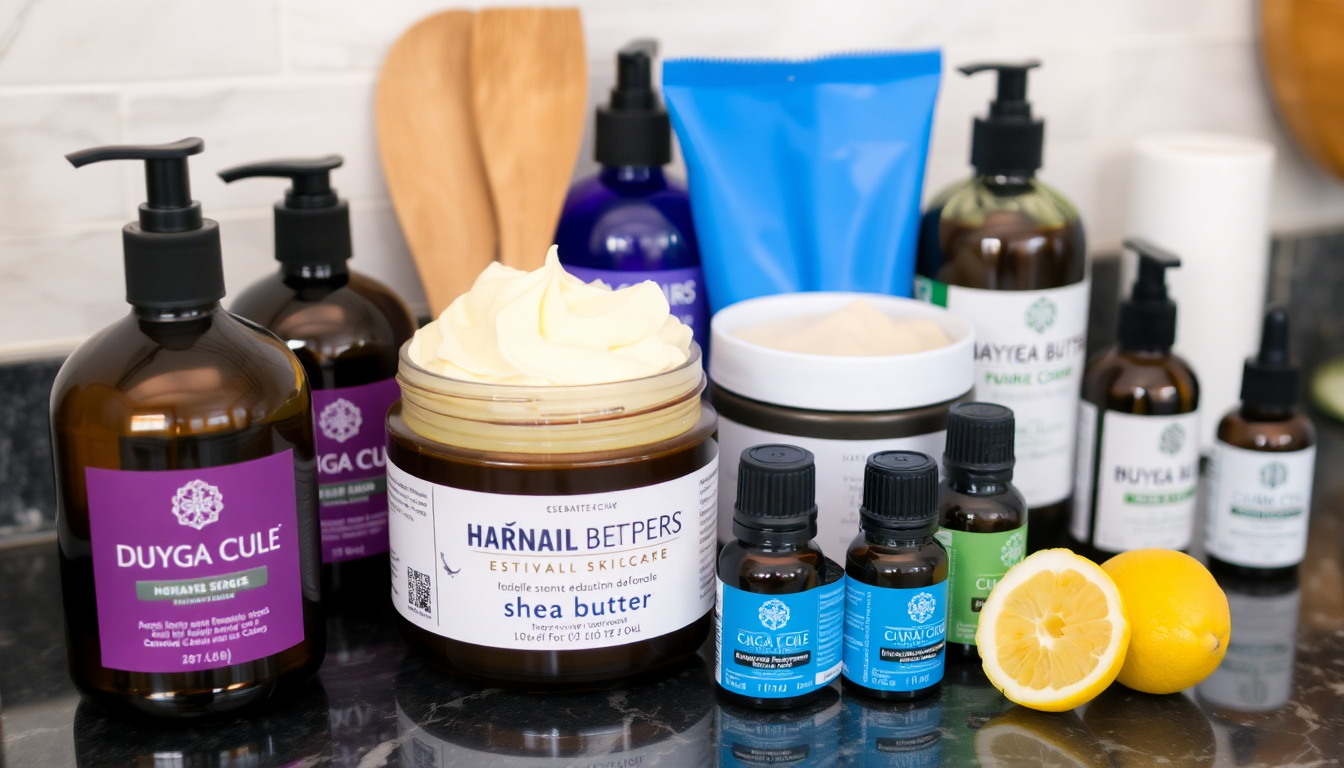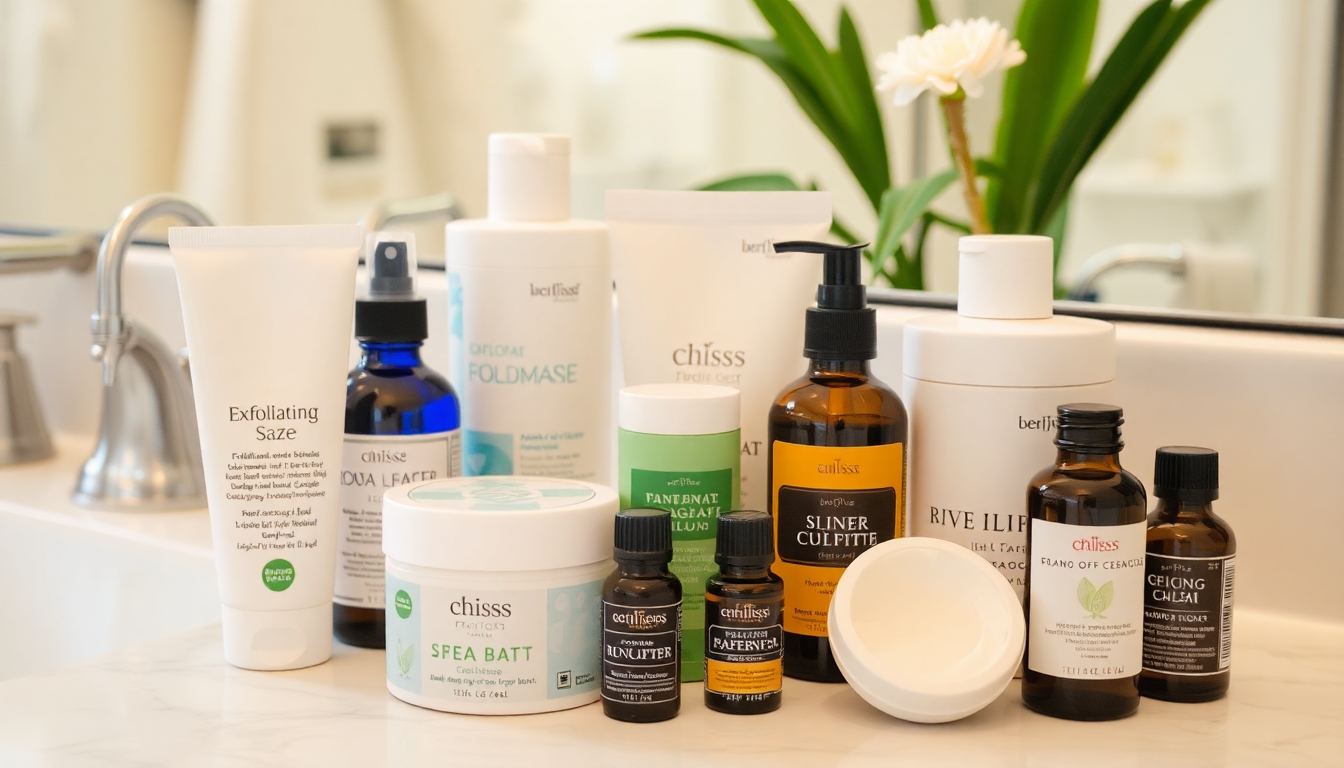Introduction
In the world of skincare, exfoliation is a critical step that often gets overlooked. Whether you're a man or a woman, understanding how to properly exfoliate can transform your skin, leaving it radiant and healthy. In this article, we will explore how to master exfoliation using simple yet effective tools such as cotton balls, shea butter, and essential oils. We will also discuss the science behind exfoliation, personalized routines, and tips for maintaining healthy skin.
The Science of Exfoliation
Exfoliation is the process of removing dead skin cells from the surface of your skin. Our skin undergoes a natural cycle of regeneration, typically every 28 days. However, as we age, this process can slow down, leading to a buildup of dead skin cells. This buildup can cause several issues:
- Clogged pores, which may lead to acne
- Uneven skin tone and texture
- Dullness in appearance
- Increased signs of aging, such as fine lines and wrinkles
By incorporating exfoliation into your skincare routine, you can help speed up this natural process, revealing fresher, healthier skin underneath.
Why Use Cotton Balls for Exfoliation?
Cotton balls are a fantastic tool for exfoliating because they are soft, gentle, and easy to use. They allow for controlled application of your exfoliating mixture, ensuring that you can target specific areas of your face without causing irritation. Additionally, cotton balls are readily available and cost-effective, making them a practical choice for anyone looking to enhance their skincare routine.
Benefits of Shea Butter
Shea butter is a natural fat extracted from the nuts of the shea tree. It is known for its moisturizing properties and is rich in vitamins A, E, and F. Here are some of the benefits of incorporating shea butter into your exfoliation routine:
- Deep Hydration: Shea butter penetrates deeply into the skin, providing long-lasting moisture.
- Soothing Properties: It can soothe irritated skin and reduce inflammation.
- Antioxidant Protection: The vitamins in shea butter help to protect the skin from environmental stressors.
- Improves Skin Elasticity: Regular use can help maintain skin elasticity, making it look youthful.
Essential Oils: Nature's Powerhouses
Essential oils are concentrated plant extracts that carry the natural scent and properties of the plants. When used in skincare, they can provide various benefits:
- Tea Tree Oil: Known for its antibacterial properties, it can help combat acne and prevent breakouts.
- Lavender Oil: Provides calming effects that can soothe the skin and reduce redness.
- Peppermint Oil: Offers a cooling sensation and can help improve circulation.
When adding essential oils to your exfoliation routine, always dilute them with a carrier oil, such as shea butter, to avoid skin irritation.
What You Will Need
- Cotton balls
- Shea butter
- Essential oils (e.g., tea tree, lavender, or peppermint)
- Warm water
- Gentle cleanser
- Moisturizer
Step-by-Step Exfoliation Routine
- Cleanse Your Face: Start with a gentle cleanser to remove dirt and impurities from your skin. Rinse with warm water to open up your pores.
- Prepare Your Exfoliating Mix: In a small bowl, mix a tablespoon of shea butter with a few drops of your chosen essential oil. Stir well to combine. The consistency should be creamy, making it easy to apply.
- Apply the Exfoliant: Take a cotton ball and dip it into your shea butter and essential oil mixture. Gently massage it onto your face using circular motions, focusing on areas that need extra care, such as the nose, forehead, and chin.
- Be Mindful of Sensitive Areas: Avoid applying too much pressure on sensitive areas like under the eyes and around the mouth.
- Rinse Off: After exfoliating for about 5 minutes, rinse your face thoroughly with warm water to remove the mixture. Ensure no residue is left behind.
- Moisturize: Finish off your skincare routine with a moisturizer to hydrate your skin and lock in the benefits of exfoliation. Look for a product that complements shea butter's nourishing properties.
Frequency of Exfoliation
For most skin types, exfoliating 1-2 times a week is sufficient. However, if you have sensitive skin, you may want to limit exfoliation to once a week or consult with a dermatologist. Here’s a quick guide to determining how often to exfoliate based on skin type:
- Oily Skin: 2-3 times a week
- Dry Skin: 1 time a week
- Sensitive Skin: Once every 1-2 weeks
- Combination Skin: 1-2 times a week
Additional Tips for Effective Exfoliation
- Always do a patch test: Before using any new essential oils or products, perform a patch test on a small area of skin to avoid allergic reactions.
- Be gentle: Over-exfoliating can irritate the skin and lead to redness or breakouts. Always be mindful of how your skin reacts.
- Stay hydrated: Drink plenty of water and maintain a balanced diet to support your skin's health from the inside out.
- Incorporate other skincare steps: Consider adding toners, serums, and masks to your skincare routine for comprehensive care.
- Protect your skin: After exfoliating, always use sunscreen during the day, as newly exfoliated skin can be more sensitive to sun exposure.
Tailoring Your Routine
Everyone's skin is unique, and what works for one person may not work for another. Here are some tips for personalizing your exfoliation routine:
- Understand your skin type: Identify whether your skin is oily, dry, normal, or combination to choose the right products and frequency.
- Adjust based on seasons: Your skin may require different care in winter versus summer. For instance, you might need more hydration in colder months.
- Monitor your skin’s response: Pay attention to how your skin feels after exfoliating. If you notice irritation, adjust your routine accordingly.
Conclusion
Mastering exfoliation using cotton balls, shea butter, and essential oils can greatly enhance your skincare routine. By following the steps outlined above, you can achieve smoother, healthier skin that radiates confidence. Remember, consistency is key to seeing lasting results!
Incorporating exfoliation into your routine not only improves the appearance of your skin but also promotes overall skin health. With patience and proper care, you will find the routine that works best for you, ensuring your skin remains vibrant and youthful for years to come. Start your journey to healthier skin today!




اترك تعليقًا
This site is protected by hCaptcha and the hCaptcha Privacy Policy and Terms of Service apply.